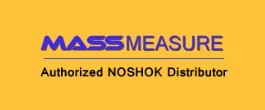5 Things To Look For In Your New pt40 series transmitter From NOSHOK
- Gauge, compound, absolute and vacuum ranges from 2 psig to 15,000 psig
- Premium accuracy
- Field adjustable offset and span
- Current and voltage outputs available
- 316 and 17-4PH Stainless Steel wetted parts
- CE compliant to suppress RFI, EMI and ESD
- RoHS compliant
Application Requirement:
Transducer application determines the varying measurement types, including some of the common ones, such as absolute gauge or sealed gauge, vacuum, bidirectional, differentials, etc.
Pressure Requirement:
When buying a heavy duty pressure transducer, there are two primary factors you need to keep in mind. Firstly, you need to check the transducer’s accuracy and its ability to withstand pressure. However, nominal damage due to pressure is normal, which brings us to the second point. Apart from the pressure withstanding power, you need to look at overpressure protection too.
Temperature Requirement:
Temperature extremities can hamper how your transducer works. However, if you have to subject your instrument to high-temperature conditions, the thin-film technology is recommended to ensure your transducer’s functionality is not hampered.
Installation Measurements:
You need to keep corrosion and electrical protection in mind when you’re installing a heavy duty transducer. Chemical fluids or explosive vapors might react with the instrument and cause irreversible damage. To avoid this, usually, installation of a transducer is followed by corrosion protection or explosion-proof safety measures.
Output:
Much like the types, there are varying outputs by pressure gauges that you need to keep in mind when shopping for a heavy duty transducer. This can be anything from amplified voltage output to digital outputs, ratiometric outputs to mA output. If you’re unsure about the output type, you can consult a professional regarding the various benefits of each output.
Accuracy:
Usually, transducers have different accursacy rates which determine the pressure of the instrument. For instance, if you want high accuracy, you need to use low-pressure solutions. The accuracy range may vary from 0.5% to 0.05%.
Apart from that, you should also take a wise call regarding the process fluid and its compatibility with your heavy duty pressure transducer. However, if you’re still a bit fuzzy about how to go about this purchase, you can always connect with industry professionals who can proactively help you with your decision.



